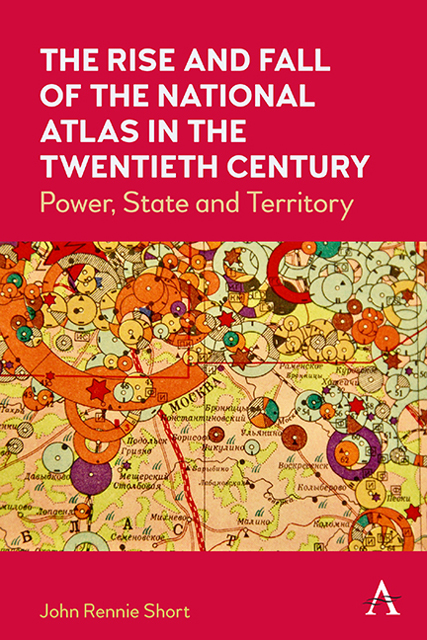Book contents
- Frontmatter
- Contents
- List of Figures
- List of Tables
- Acknowledgments
- 1 Introduction
- 2 The Early National Atlas
- 3 Cartographic Anxieties and the Emergence of the Modern National Atlas
- 4 Cartographic Ruptures and the National Atlas
- 5 National Atlas, Global Discourses
- 6 The Physical World of the National Atlas
- 7 The Social World of the National Atlas
- 8 The End of the National Atlas?
- Notes
- Appendix: National Atlas Bibliography
- Index
7 - The Social World of the National Atlas
Published online by Cambridge University Press: 09 December 2022
- Frontmatter
- Contents
- List of Figures
- List of Tables
- Acknowledgments
- 1 Introduction
- 2 The Early National Atlas
- 3 Cartographic Anxieties and the Emergence of the Modern National Atlas
- 4 Cartographic Ruptures and the National Atlas
- 5 National Atlas, Global Discourses
- 6 The Physical World of the National Atlas
- 7 The Social World of the National Atlas
- 8 The End of the National Atlas?
- Notes
- Appendix: National Atlas Bibliography
- Index
Summary
The national atlas depicts the people of the nation-state. This depiction is not innocent of wider political considerations. The theorist Michel Foucault argued that human life is enmeshed in politics as a form of “biopolitics,” a term he based on the work of Rudolf Kjellén, the Swedish political scientist who coined geopolitics as a term for the study of the intersection of human biology with politics. The state regulation of bodies in laws, rulings and practices is an integral part of the power of the state, whether it be in the right of entry to the country, the age of consent, the legality of abortions, the age of retirement with state benefits or the right to assisted suicide. The state lays claim over life and not just in the threat of death or incarceration. The state extends and deepens its reach over our bodies in myriad ways. Foucault wrote of a “power that exerts a positive influence on life, that endeavors to administer, optimize, and multiply it, subjecting it to precise controls and comprehensive regulations.” The modern state is conceptualized and materially produced through the management of the land and the people. In the previous chapter we looked at the land, here we consider the people.
The national atlas was an important tool in biopolitics as it offered a visualization to the way that the population was enumerated, classified and ultimately controlled. To manage, control and regulate, it is necessary for the state to have a sense of how many bodies there are, where they are and what types. While the absolute amounts are a simple matter of arithmetic, the categorization is as much a social construction as a mathematical one. The national atlas gives us an insight into the realm of biopolitics because it employs a social categorization of the population that reveals much about the tensions and anxieties as well as the hopes and fears of the state, the political elites and the scientific establishment. The national atlas constitutes an important record of the constant and the changing classifications adopted, used and in some cases abandoned.
- Type
- Chapter
- Information
- The Rise and Fall of the National Atlas in the Twentieth CenturyPower, State and Territory, pp. 115 - 142Publisher: Anthem PressPrint publication year: 2022

